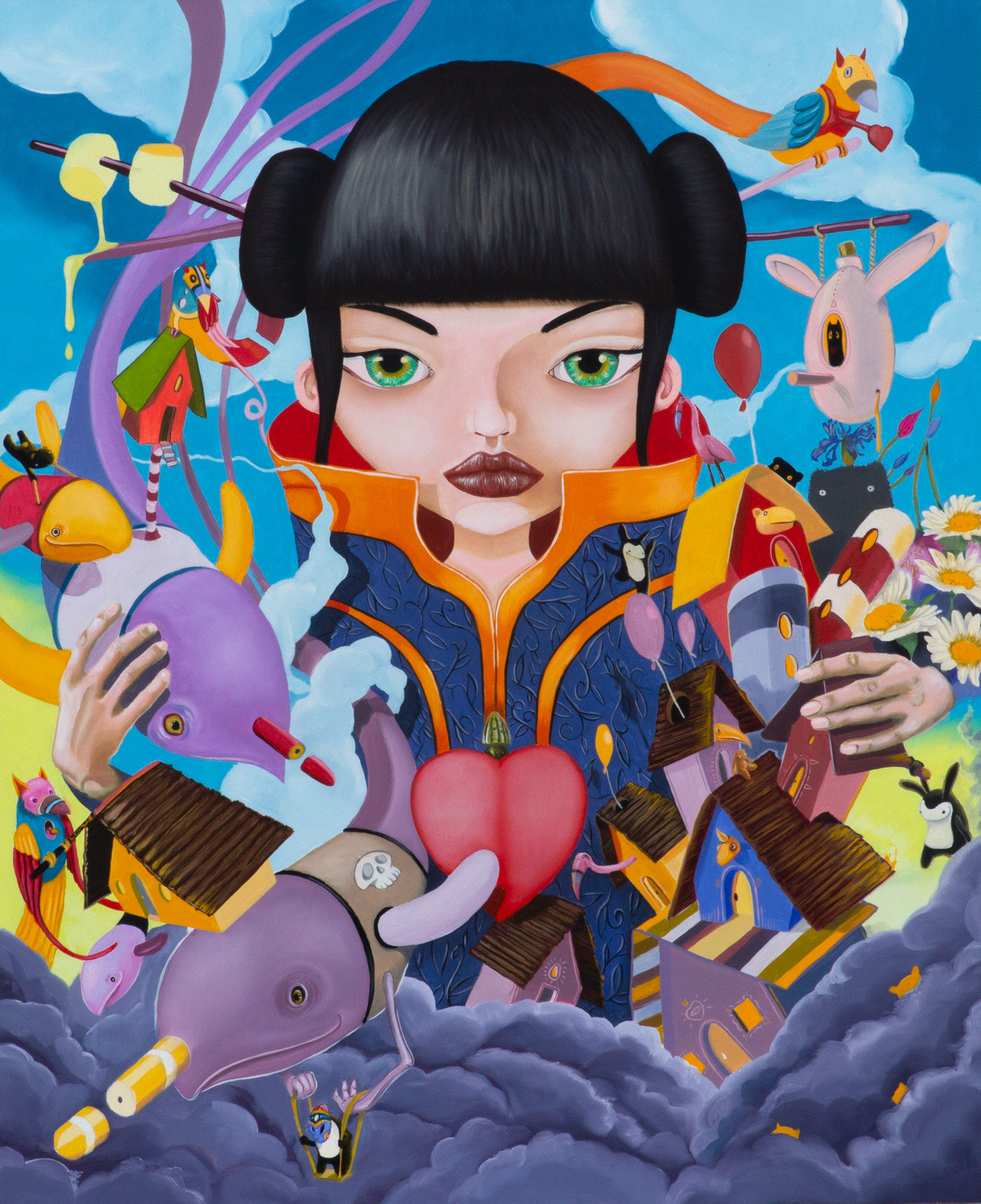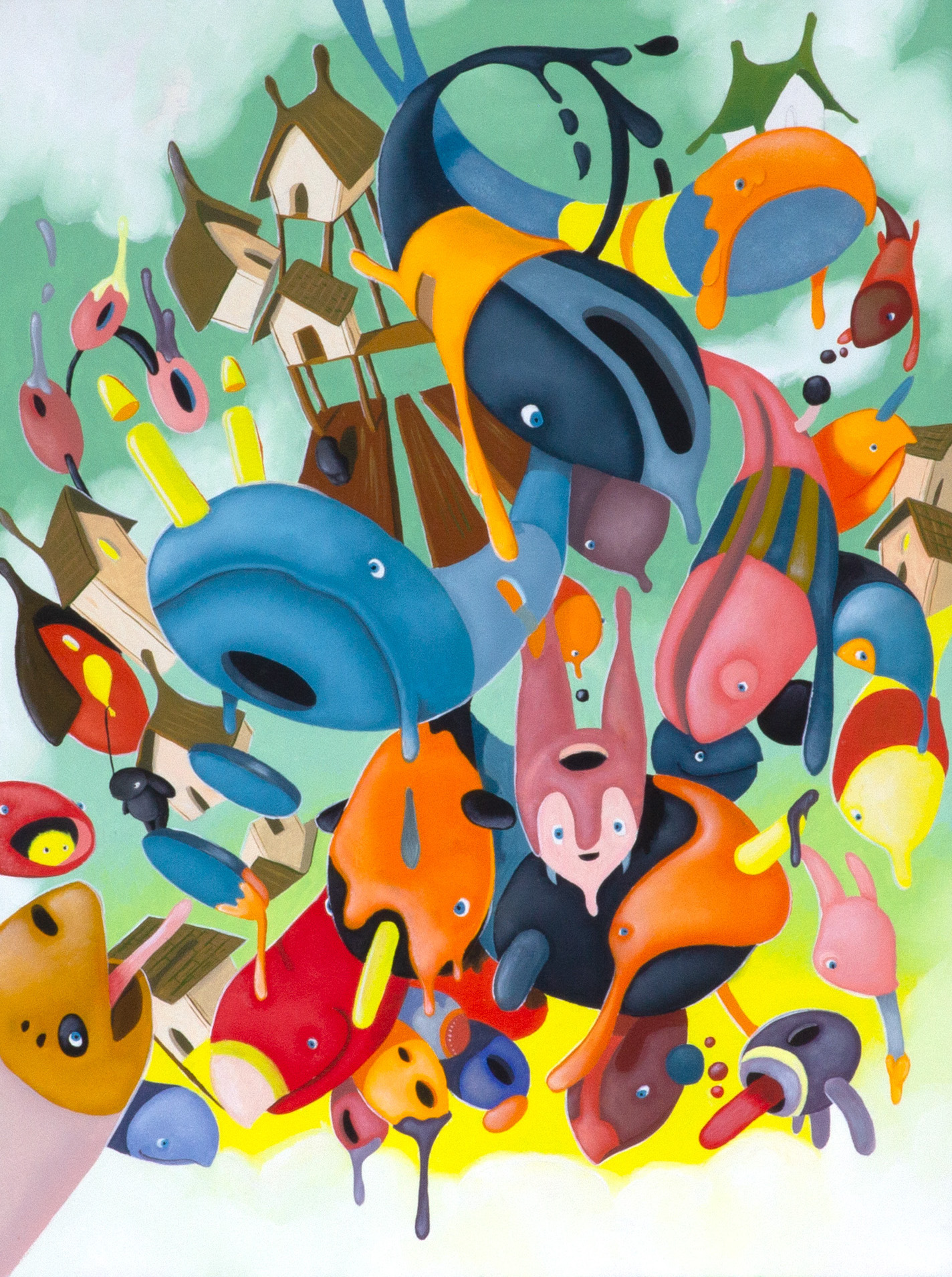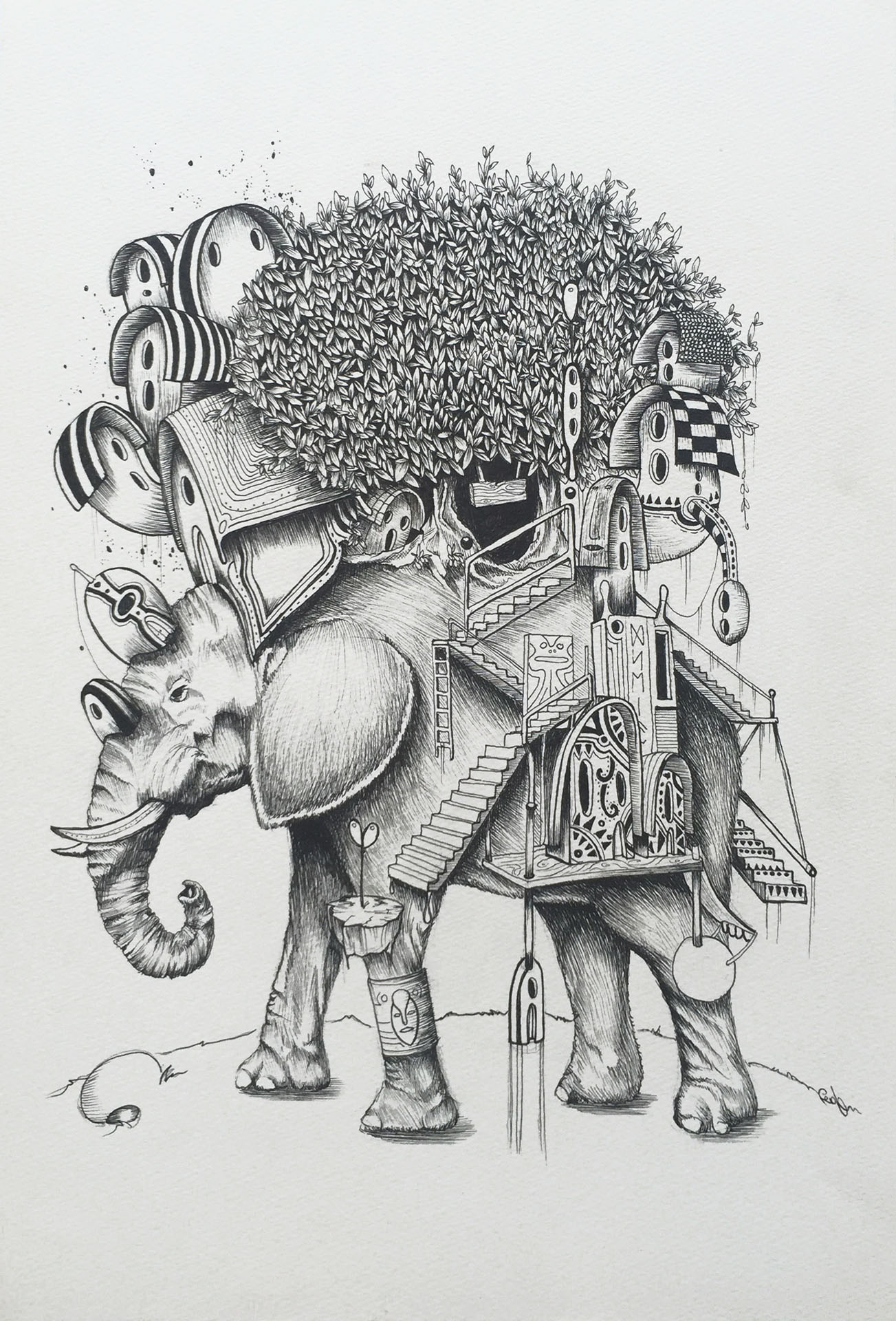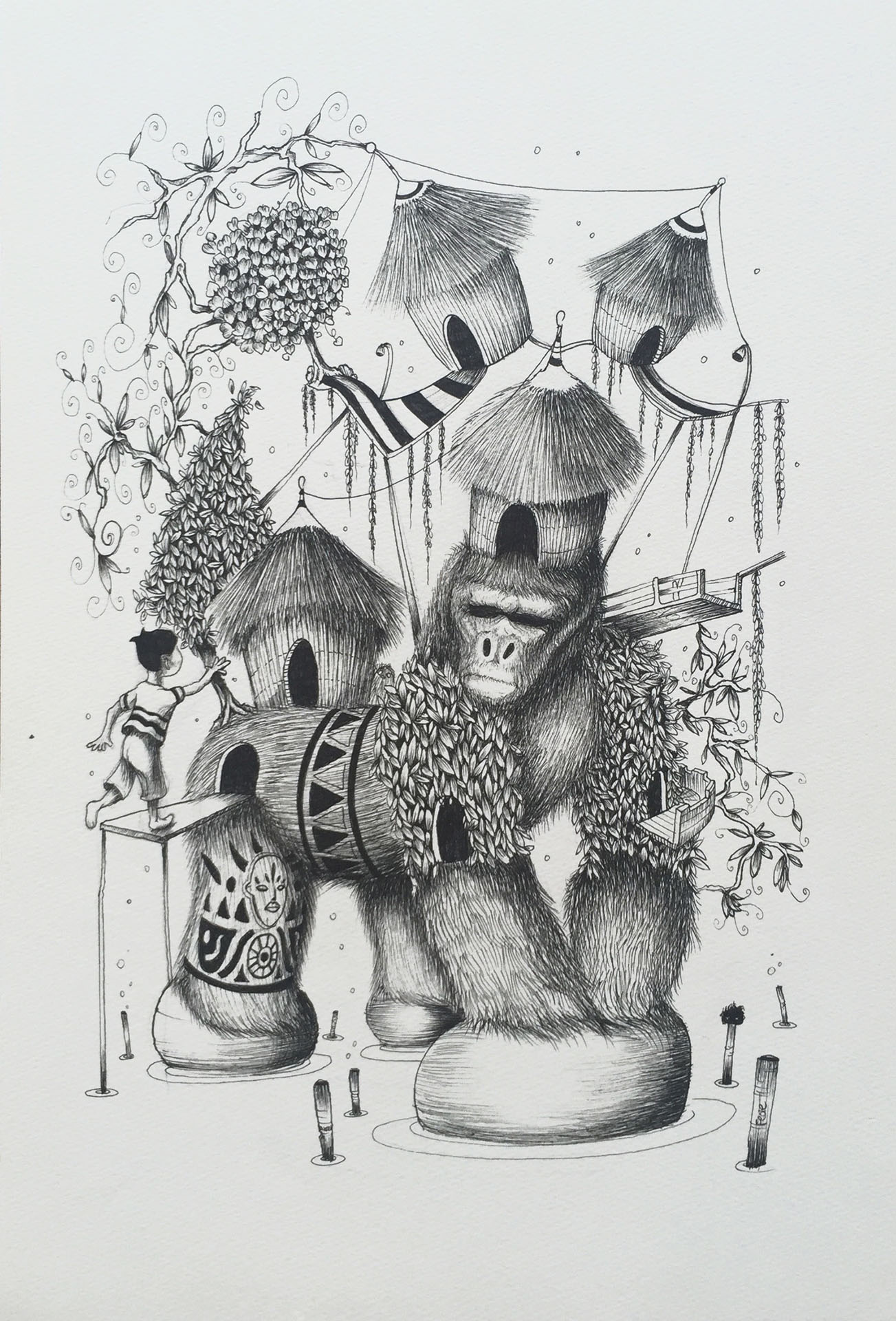Chaos of color filling the screen
A girl is surrounded by imaginary creatures, including birds that live in an unexplored paradise and mammals that look like antique toys. In the background, a muddy river flows, dark clouds hang low, and beautiful flowers bloom in full bloom, creating an earth-shattering scene.
Federico Bartoli draws on motifs from classical paintings, fables, and pop culture from the 1990s onwards to create fantasy worlds. The exhibition "Candy Creatures" is made up of works filled with colorful candy colors. 25 oil paintings created specifically for this exhibition will be on display, as well as three painted skateboards.
Federico Bartoli was born in Milan, Italy in 1976. He grew up surrounded by historical paintings, street art, and Japanese anime. He was particularly inspired by the artwork for the British heavy metal band Iron Maiden's album "Somewhere in Time," and decided to pursue a career in art. He enrolled in an art school in Milan at the age of 14, where he learned the basic techniques of traditional painting, Italian art history, and graphic design.
At the age of 24, he left his native Italy to begin his career as a designer, working on the corporate identity of global brands such as Coca-Cola, Red Bull, and the NBA. After working in Austria and Hong Kong, he is now based in Itoshima, Fukuoka Prefecture, where he creates works as a painter while working with clients from all over the world.
The motifs are creatures and nature from planets other than Earth, and are depicted in a color scheme that Federico himself calls "Chaos of Color."
"Each of the creatures in my creation is a different color, like they came out of a candy tin. When you lick a candy, you can be dyed any color you like. I hope to live freely like that."
Respect for all living things
The candy-colored paintings in the exhibition title are filled with the brightness of life and the richness of the extraordinary, and the main character, a woman, is depicted as the creator of all living things. And candy symbolizes colorful life. The message embedded in them is "Respect Earth," a sign of respect for all living things.
"Even when bad things happen to me, art has always helped me by making me feel happy. I want my paintings to have that same kind of positivity."
Before he began living in Japan, Federico drew detailed images using drawings. His work was based on the theme of chaos that emerges from the intersection of monochrome lines. However, while living peacefully surrounded by nature in Itoshima City, Fukuoka Prefecture, he began to draw as a way of searching for himself, and as he expressed his changing emotions every day, his work naturally became more colorful.
The imaginary creatures are inspired by the nature and free-living animals that I encountered in Austria, while the dynamism and vivid colors are inspired by the street art of Milan, the signs, and the urban landscape of Hong Kong.
The depth of humanity, as lovely as candy
With a woman as the main character and a mob of creatures surrounding her, the composition of the painting, which guides the eye, seems to pay homage to Renaissance paintings such as Raphael's "The Triumph of Galatea." The painting style can be placed in the lineage of Pop Surrealism, an art movement of the late 1990s that combined pop culture and surrealism.
Many of Federico's works depict fairy-tale-like houses and villages, and he also uses the theme of nostalgia, reflecting his own feelings for his hometown, which he feels has been moved from place to place, and which he expresses as a contrast to an ideal paradise.
Mark Ryden, known as the "father of pop surrealism," chose the contrast between nostalgia and kitsch in modern society as his theme for his 2010 solo exhibition, "The Gay 90's: Old Tyme Art Show." The ideals people hold up are attractive, but at the same time they can also become overly beautiful, and he explored the boundaries of resistance to this.
Federico says, "I have no dark feelings when I paint," and the dark colors he uses effectively in his vivid paintings foreshadow the anxiety that lurks behind the world, and are depicted as the boundary between an ideal paradise. We also notice that human emotions, both positive and negative, are also depicted here.
We are being forced to change all our values. Nostalgia for the times and places we once lived in and the ideals of a new world. The depth of humanity lies in the conflict between opposing values. Federico Bartoli's work makes us think that the depth of humanity is not dark, but colorful and delicate like candy.









